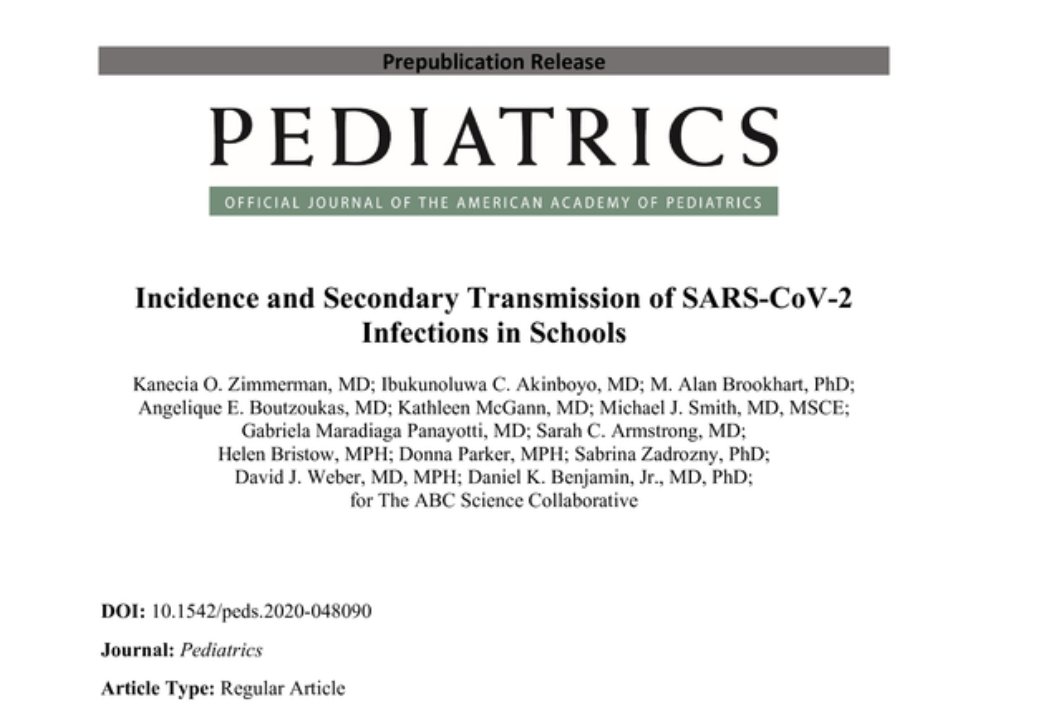America has few opportunities for kids who are born poor, school has long been one of them
Other countries recognize that schools provide upward mobility, detect child abuse, provide a hot meal, educate kids, allow them to develop socially

REAL data on schools from Sweden
— Dr. Vinay Prasad MD MPH, Associate Professor (@VPrasadMDMPH) January 7, 2021
Schools open Mar-June
2 mil kids
No MASK
Soc distancing
No HVAC renos
No change in death for kids
15 -> ICU
0 deaths from COVID
RR of being teacher & requiring ICU for covid
= 1.10 (95% confidence interval [CI], 0.49 to 2.49
[thread] pic.twitter.com/5AzhceIFGL

My view on schools-- they ought be open in all but rarest instances-was reached from late summer to fall, when I spent considerable time examining the risk of virtual schools to kids vs. the risk of in person schools to kids, teachers, community
— Dr. Vinay Prasad MD MPH, Associate Professor (@VPrasadMDMPH) January 8, 2021
Here is my journey
[thread]
\U0001f17b\U0001f130\U0001f17d\U0001f176\U0001f184\U0001f130\U0001f176\U0001f174 \U0001f180\U0001f184\U0001f178\U0001f189
— zev handel (@ZevHandel) December 17, 2020
The following sentences are in seven different languages, all written in Chinese-character script (or a modification of it). Can you identify the languages?
Sentences are in thread.
(1/3)
7) \u4eca\u5929\u611b\u665a\u7279\u8a9e\u5154\u5403\u4e8c\u9b5a\u4f5b\u5348\u98ef \u2013 Modern English
— zev handel (@ZevHandel) December 21, 2020
Today I want you to each two fish for lunch.
That this sentence is a written form of English is undeniable, as the sentence is made up entirely of English words following the rules of English grammar. 23/
Misinterpretation of surveillance data is a serious issue. Surveillance data needs to come with a warning label - Open to biases - interpret with caution! Some may not realize that surveillance often does not measure all infection, it's a proxy for actual disease incidence.
— Andrew Lee (@andrewleedr) February 14, 2021
1/